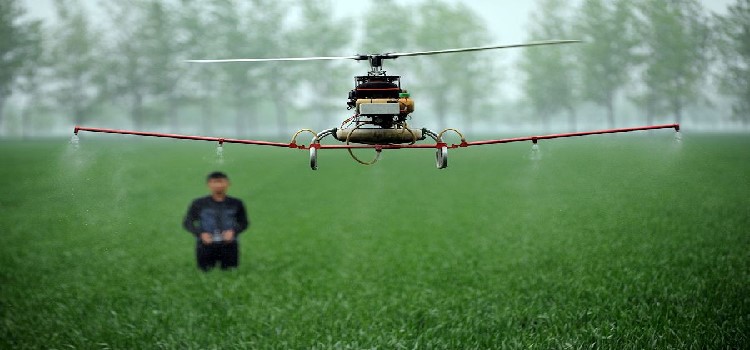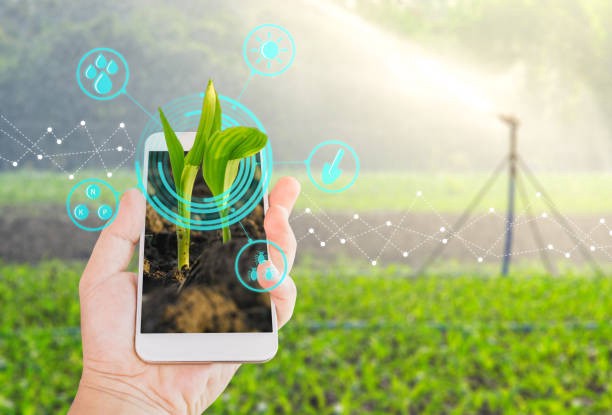
France Agriculture Robots Market by Type (Driverless Tractors, Unmanned Aerial Vehicles (UAVs), Milking Robots, Automated Harvest Robots, and Others), Offering (Hardware, Software, and Services), Farming Type (Indoor Farming and Outdoor Farming), Application (Dairy Management, Irrigation Management, Harvest Management, Soil Management, Inventory Management, and Others), and End User (Field Crops, Fruits & Vegetables, Livestock, and Others) – Opportunity Analysis and Industry Forecast 2023–2030
Industry: Agriculture | Publish Date: 17-Jul-2023 | No of Pages: 88 | No. of Tables: 73 | No. of Figures: 31 | Format: PDF | Report Code : N/A
France Agriculture Robots Market Overview
France Agriculture Robots Market size was valued at USD 187.82 million in 2022 and is predicted to reach USD 395.4 million by 2030, with a CAGR of 8.6% during the forecast period, 2023–2030. Agricultural robots, also known as agribots or agri-robots, are machines designed to automate or semi-automate various tasks in the field of agriculture. The functionalities of these robots include planting, harvesting, monitoring, and spraying crops. These robots are developed to improve efficiency, productivity, and accuracy in agriculture while reducing the dependence on manual labor and enhancing working conditions for farmers. They utilize advanced technologies like computer vision, artificial intelligence (AI), and others.
Agribots are equipped with sensors, actuators, and intelligent algorithms that enable them to perceive their environment, make decisions, and carry out specific actions. These robots can navigate through fields using GPS or mapping technologies to perform tasks such as planting seeds, harvesting crops, applying pesticides or fertilizers, and monitoring crop health. They use computer vision to identify and differentiate between crops and weeds, detect pests or diseases, and take precise actions accordingly.
Addressing Labor Shortage with Agricultural Robots
The agriculture sector in France, as in many other countries, is grappling with a shortage of skilled labor. Therefore, agricultural robots have emerged as a promising solution to address this labor shortage in the agriculture sector. These robots are designed to automate a wide range of tasks traditionally performed by human labor, including planting, harvesting, weeding, and monitoring crops.
By introducing agricultural robots, farmers can reduce their dependence on manual labor and accomplish more with limited resources. These robots can work tirelessly, day and night, without the need for breaks or rest, ensuring round-the-clock operations and increased efficiency. Thus, it is expected to drive the growth of the agriculture robots market in France.
Enhancing Efficiency and Productivity with Agricultural Robots in France
In France, agricultural robots are playing a significant role in boosting efficiency and productivity in farming operations. These robots are specifically designed to perform a range of tasks, including planting, harvesting, weeding, and crop monitoring, with exceptional precision and accuracy. By leveraging advanced technologies like computer vision, GPS, and machine learning, these robots optimize resource utilization, minimize waste, and enhance overall productivity in the agriculture sector. Thus, creating significant growth of the agriculture robots market in the country.
High Initial Investment in Agriculture Robots
The high initial cost of acquiring agricultural robots can pose a challenge for farmers, especially those operating on a small scale, in France. The expenses associated with purchasing, maintaining, and integrating the necessary robotics technology and equipment can be prohibitive, limiting the widespread adoption of these systems among farmers who may not have the financial resources to invest in them. This factor is expected to restrain the growth of the agricultural robots market in France.
Technological Advancements in the Agricultural Sector
In France, the agriculture sector is poised to benefit from the rapid advancement of technology, including artificial intelligence (AI), machine learning, and robotics. These advancements are expected to create ample opportunities for the agricultural robots market. As technology continues to evolve, agricultural robots in France can become increasingly sophisticated, intelligent, and capable of performing a wide range of tasks with higher accuracy and efficiency. These tasks may include precision planting, crop monitoring, weed detection, and harvesting. The continuous development and integration of advanced technologies in agricultural robots offer promising prospects for the French agriculture industry to enhance productivity and drive sustainable farming practices.
Competitive Landscape
The agriculture robots industry includes several market players such as Naio Technologies, Chloe Robotics, Vitic Robotics, Green Robotique, AgroParisTech, INRAE, CEA, Meropy, AISPRID, and Hyperplan. These market players are adopting various strategies such as new launches to maintain their dominance in the market in France.
For instance, in January 2023, Meropy launched a new AI-powered farming robot named SentiV that autonomously inspects crops from both above and below, saving farmers time and money. SentiV uses two cameras to image crops from above and below. Data from the cameras is analyzed by AI algorithms trained to spot threats, monitor growth, and identify signs that the plant might need more or less water and nutrients.
Key Benefits
-
The France agriculture robots market report provides a quantitative analysis of the current market and estimations through 2023-2030 that assists in identifying the prevailing market opportunities to capitalize on.
-
The study comprises a deep dive analysis of the market trend including the current and future trends for depicting the prevalent investment pockets in the market.
-
The information related to key drivers, restraints, and opportunities and their impact on the market is provided in the report.
-
The competitive analysis of the market players along with their market share in the France agriculture robots market.
-
The SWOT analysis and Porter’s Five Forces model are elaborated in the study.
-
Value chain analysis in the market study provides a clear picture of the stakeholders’ roles.
France Agriculture Robots Market Key Segments
By Component
-
Driverless Tractors
-
Unmanned Aerial Vehicles (UAVs)
-
Milking Robots
-
Automated Harvest Robots
-
Others
By Offering
-
Hardware
-
Software
-
Services
By Farming Type
-
Indoor Farming
-
Outdoor Farming
By Application
-
Dairy Management
-
Irrigation Management
-
Harvest Management
-
Soil Management
-
Inventory Management
-
Others
By End User
-
Field Crops
-
Fruits & Vegetables
-
Livestock
-
Others
Key Players
-
GEA Group
-
CNH Industrial
-
Delaval
-
Deere & Company
-
AGCO Corporation
-
Trimble Inc.
-
Naio Technologies
-
Yanmar Holdings Co. Ltd.
-
SZ DJI Technology co. Ltd.
-
Boumatic
-
Harvest Automation Inc
-
Autonomous Solution Inc
-
Clearpath Robotics
-
Ageagle Aerial System
-
Kubota Corporation




 Speak to Our Analyst
Speak to Our Analyst

































